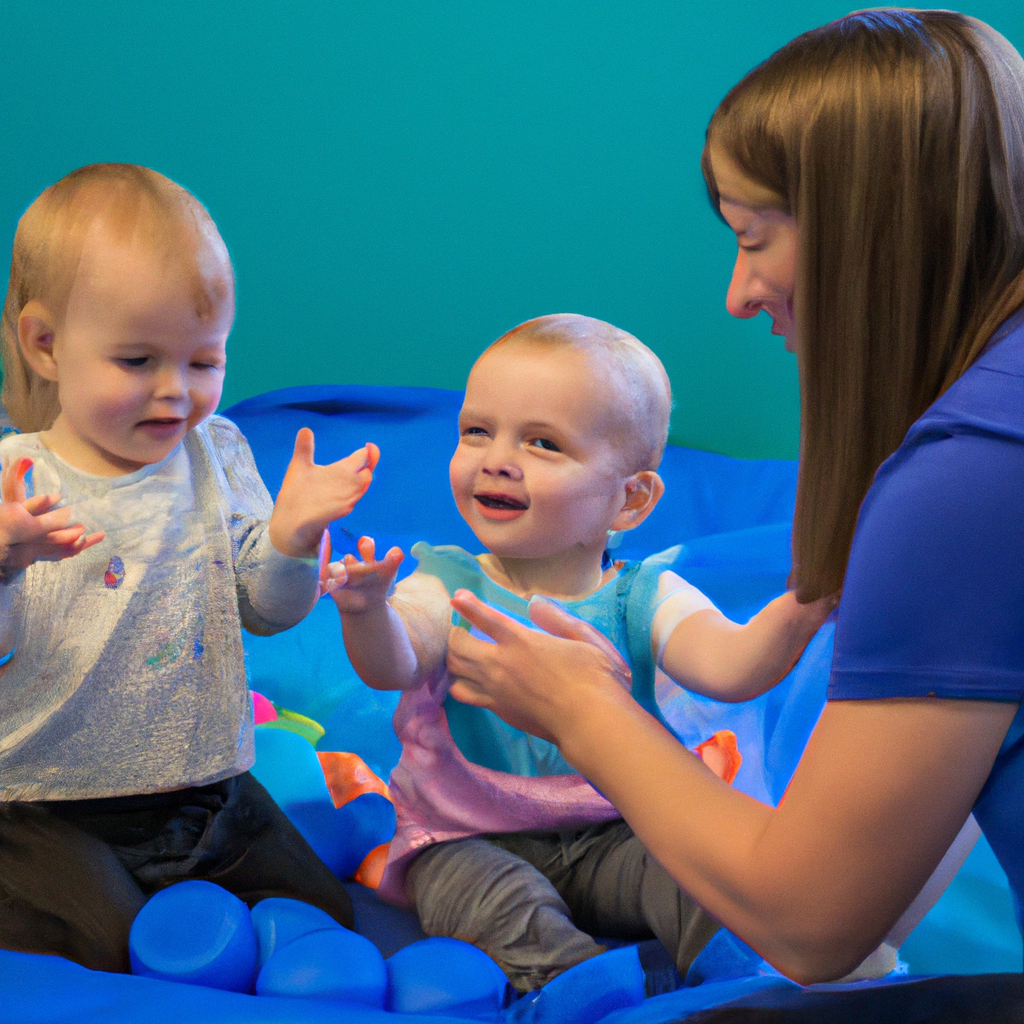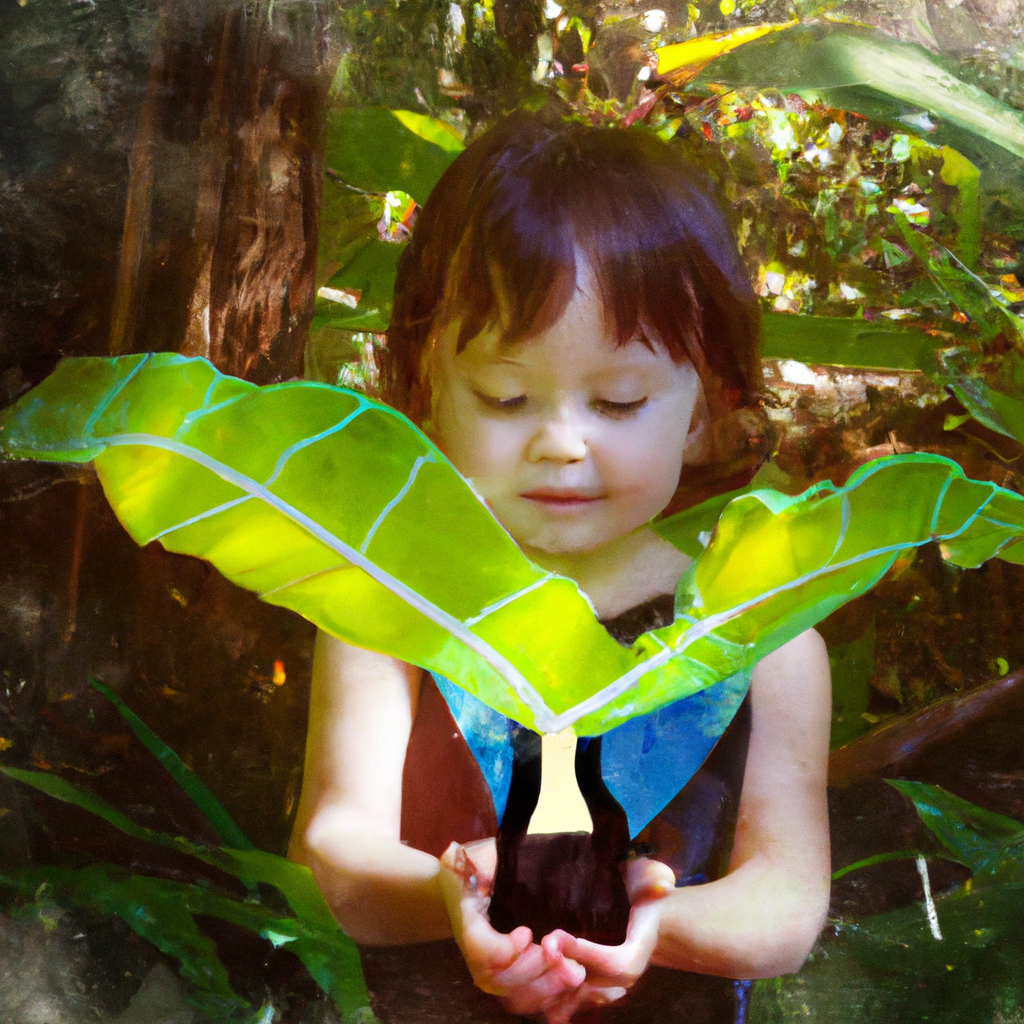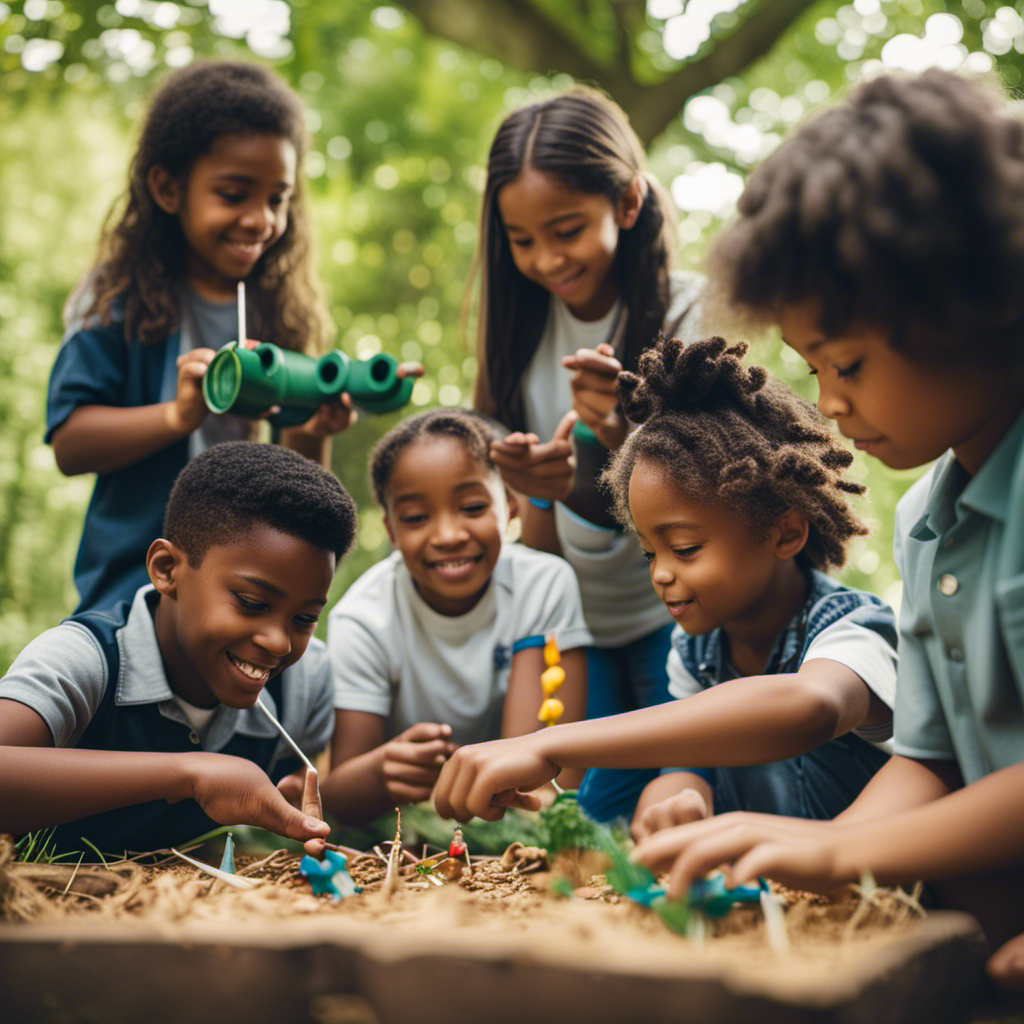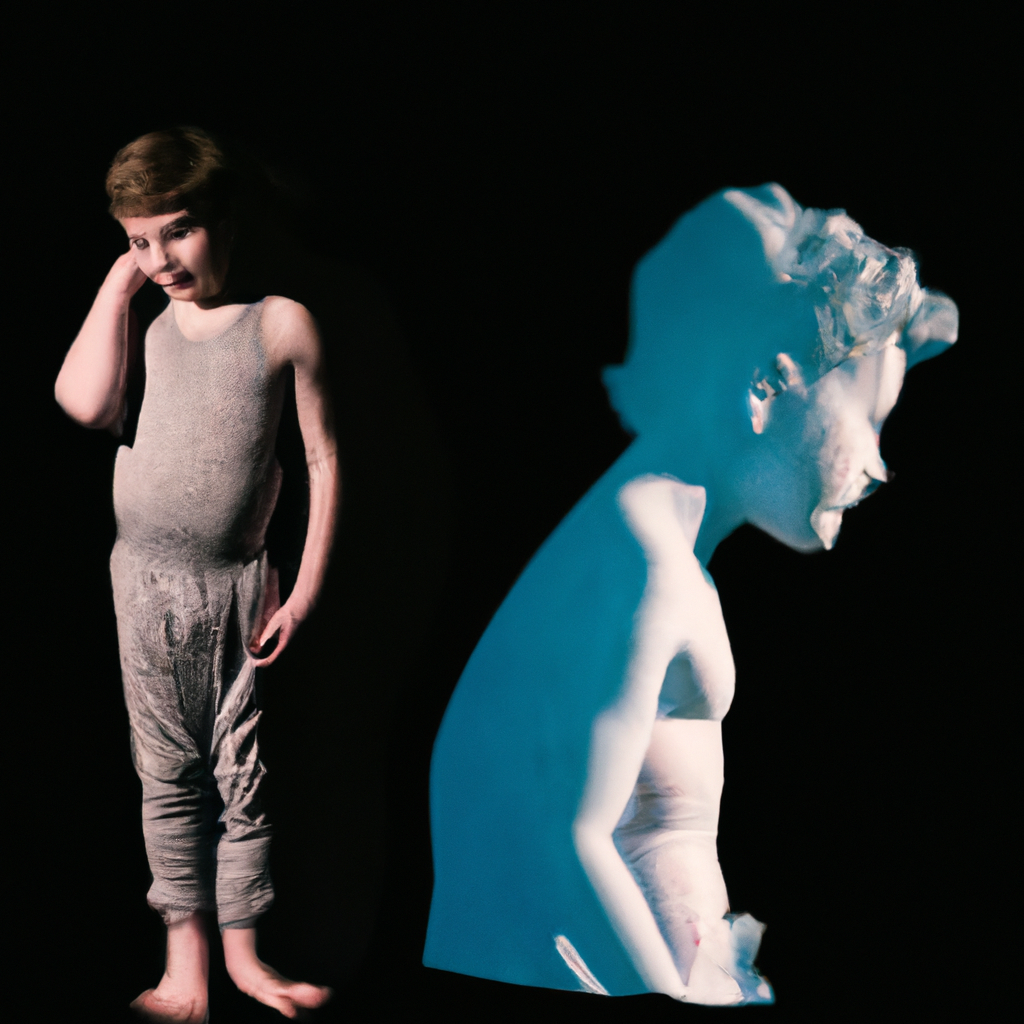As a professional in the field of child development, it is a privilege for me to support and encourage young individuals in reaching their full potential. Whether during their formative years or through their teenage stage, my primary focus is on understanding and assisting in the mental, emotional, and physical development of children.
With my expertise, I guide parents and caregivers in creating nurturing environments, provide educational interventions, and advocate for the well-being of every child.
Join me as we explore the fascinating world of child development and the invaluable work of a child development specialist.
Key Takeaways
- A child development specialist works with children and families to support growth and development, providing guidance and assistance to ensure optimal development.
- A bachelor’s or master’s degree in child development or a related field is essential, with specialized coursework in child psychology and early childhood education.
- There is a growing demand for child development specialists due to increased awareness of the importance of early childhood development, with employment opportunities in schools, daycare centers, hospitals, and nonprofit organizations.
- Child development specialists assess developmental progress, provide guidance to parents and caregivers, and collaborate with them to create a nurturing environment, staying up-to-date with research and best practices for effective support.
Definition of a Child Development Specialist
A child development specialist is someone who works with children and their families to support their growth and development. They have a deep understanding of the various stages of child development and the factors that influence it. Their primary goal is to provide guidance and assistance to both children and their families, ensuring that they receive the necessary support for optimal development.
To become a child development specialist, there are specific education requirements. Most positions in this field require at least a bachelor’s degree in child development, psychology, or a related field. Some employers may also require a master’s degree for certain positions, particularly in research or advanced clinical roles. Additionally, obtaining certifications or licenses in early childhood education or child development can enhance job prospects and demonstrate expertise in the field.
Speaking of job prospects, the demand for child development specialists is expected to grow in the coming years. With increased awareness of the importance of early childhood development, there is a growing need for professionals who can provide specialized support and interventions. Child development specialists can find employment in a variety of settings, including schools, daycare centers, hospitals, and nonprofit organizations.
Now that we have covered the definition and job prospects of a child development specialist, let’s delve into the education and training requirements necessary for this rewarding career.
Education and Training Requirements
To become a child development specialist, there are specific education and training requirements that need to be met.
First and foremost, a degree in child development or a related field is essential. Additionally, certification or licensure may be required depending on the specific job or state regulations.
Specialized coursework in areas such as child psychology, early childhood education, and developmental assessment is also typically necessary to gain the knowledge and skills needed to excel in this field.
Degree and Certification Needed
A child development specialist typically needs a bachelor’s degree and relevant certifications. The degree requirements for this profession usually include a major in child development, psychology, or a related field. Some universities even offer specialized programs specifically designed for aspiring child development specialists.
In addition to the degree, there is also a certification process that these specialists must go through. This process involves completing certain coursework, gaining practical experience through internships or supervised placements, and passing a certification exam. The certifications available for child development specialists are provided by professional organizations such as the National Association for the Education of Young Children (NAEYC) or the Association for Child Life Professionals (ACLP). These certifications demonstrate a specialist’s competence and commitment to the field.
Transitioning into the next section about the specialized coursework required, it is important to note that this coursework is an essential part of the certification process and provides the specialist with the knowledge and skills needed to effectively work with children and families.
Specialized Coursework Required
Once you have completed your bachelor’s degree, you will need to take specialized coursework that focuses on child development and related areas. This specialized training is essential for becoming a child development specialist.
The coursework requirements for this field typically include:
-
Child Development: This course provides an in-depth understanding of the physical, cognitive, and socio-emotional development of children. It covers topics such as language acquisition, play, and socialization.
-
Child Psychology: This course explores the psychological development of children, including their emotions, personality, and behavior. It delves into theories and research on child development and examines the factors that influence their mental health.
-
Family Dynamics: This course examines the role of family in child development. It explores how family relationships, parenting styles, and cultural influences impact a child’s growth and development.
By completing these specialized courses, child development specialists gain the knowledge and skills necessary to support the healthy development and well-being of children and families.
In the next section, we will explore the role and responsibilities of child development specialists in more detail.
Role and Responsibilities
When working as a child development specialist, my role and responsibilities include assessing children’s developmental progress and providing guidance to parents and caregivers. Evaluating a child’s development is crucial in order to identify any areas that may need attention or intervention. There are various evaluation methods that I use to assess children’s developmental milestones, such as observation, standardized assessments, and parent interviews. These methods provide a comprehensive picture of a child’s strengths and areas for growth.
In addition to evaluation, I also play a key role in providing guidance to parents and caregivers. I offer support and resources to help them understand their child’s development and provide appropriate activities and interventions. By collaborating with parents and caregivers, we can create a nurturing and stimulating environment that promotes optimal growth and development.
As a child development specialist, it is important for me to stay up-to-date with the latest research and best practices in the field. Professional development opportunities such as conferences, workshops, and continuing education courses allow me to expand my knowledge and skills. By continuously learning and growing, I can provide the most effective and evidence-based support to children and their families.
The role of child development specialists is crucial in ensuring that children reach their full potential. By assessing developmental progress and providing guidance, we can support children in their growth and development.
Importance of Child Development Specialists
You play a crucial role in ensuring that children reach their full potential by assessing their developmental progress and providing guidance to parents and caregivers. As a child development specialist, your work is of utmost importance in promoting early intervention and supporting children’s overall development.
Early intervention refers to identifying and addressing developmental delays or challenges in children as early as possible. Research has shown that early intervention can have a significant impact on a child’s long-term outcomes, improving their academic performance, social skills, and overall well-being.
Child development specialists play a key role in facilitating early intervention by conducting assessments to identify any developmental delays or concerns. They then work closely with parents and caregivers to develop individualized plans and provide strategies to support the child’s development. By implementing early intervention strategies, child development specialists can help minimize the impact of developmental delays and provide children with the necessary tools and support to reach their full potential.
The impact of child development specialists extends beyond the child themselves. By working closely with parents and caregivers, they empower them to become active participants in their child’s development. This collaboration helps parents understand their child’s unique needs, promotes positive parenting practices, and fosters a supportive environment for the child’s growth.
Transitioning into the subsequent section about ‘key skills and qualities,’ it is essential for child development specialists to possess a range of skills and qualities that enable them to effectively support children’s development.
Key Skills and Qualities
Having a strong understanding of child development is essential for effectively supporting children’s growth and well-being. As a child development specialist, I possess a range of key skills and qualities that enable me to excel in this field.
First and foremost, I have a deep knowledge of the various stages of child development, including physical, cognitive, social, and emotional milestones. This knowledge allows me to accurately assess a child’s progress and identify any areas of concern.
Additionally, I have excellent communication skills, which enable me to effectively collaborate with parents, teachers, and other professionals involved in a child’s life. I am empathetic and patient, understanding that each child is unique and may require different approaches to support their development.
I am also skilled in observation and documentation, as these play a crucial role in monitoring a child’s progress over time.
Finally, I am dedicated to ongoing professional development, staying up-to-date with the latest research and best practices in child development. With these key skills and qualities, I am able to provide the highest level of support to children and their families.
Transitioning to the subsequent section about ‘areas of specialization’, it is important to note that child development specialists can specialize in various areas based on their interests and expertise.
Areas of Specialization
As a child development specialist, my expertise lies in focusing on specific areas of a child’s development and providing specialized support and guidance.
With a deep understanding of child psychology and development, I am able to tailor my approach to meet the unique needs of each child.
Specific Developmental Focus
When it comes to specific developmental focus, a child development specialist can help identify areas where your child may need additional support. These specialists have expertise in key areas such as cognitive, physical, social, emotional, and language development.
By observing and assessing your child’s behaviors, milestones, and interactions, they can pinpoint any delays or challenges that may require intervention. For example, if your child is struggling with language development, a child development specialist can provide strategies and techniques to enhance their communication skills. They have a deep understanding of the typical developmental trajectory and can tailor interventions to meet your child’s unique needs.
With their specialized knowledge and experience, child development specialists are equipped to guide you in supporting your child’s overall growth and development.
Expertise in Key Areas
You can gain valuable insights and guidance from professionals who specialize in cognitive, physical, social, emotional, and language development. Child development specialists are experts in understanding the unique needs and challenges that children face as they grow and develop.
With specialized training in child psychology, these professionals are equipped to provide comprehensive support to children and their families. They possess a deep understanding of the various aspects of child development and can offer evidence-based strategies to promote healthy growth and address any developmental concerns that may arise.
By working closely with child development specialists, parents and caregivers can access the knowledge and expertise needed to foster optimal development in their children. These professionals play a crucial role in ensuring that children reach their full potential.
Now, let’s explore the process of assessing developmental milestones and monitoring progress.
Assessing Developmental Milestones
Child development specialists use various tools and methods to assess a child’s developmental milestones. Assessing developmental delays and tracking developmental progress are crucial in understanding a child’s growth and identifying potential areas of concern. These assessments help specialists gain insights into a child’s cognitive, physical, social, and emotional development.
To assess developmental milestones, specialists often rely on standardized tests and questionnaires. These tools provide a structured framework for evaluating a child’s skills and abilities in different domains. Observations and interviews with parents and caregivers also play a vital role in gathering information about a child’s development.
In addition to formal assessments, child development specialists may use informal methods, such as play-based assessments, to gather rich data about a child’s skills and behaviors. By engaging in play activities, specialists can observe a child’s problem-solving abilities, language development, fine and gross motor skills, and social interactions.
The information gathered through these assessments allows specialists to identify any potential delays or areas of concern. Armed with this knowledge, they can then develop individualized plans to support a child’s growth and development. These plans may include targeted interventions, therapy sessions, or referrals to other professionals.
Developing Individualized Plans
When it comes to helping individuals reach their full potential, it is crucial to develop individualized plans.
This involves tailoring specific learning strategies to meet their unique needs and learning styles.
Customizing developmental goals and using personalized approaches for growth ensures that each individual receives the support and resources they require to thrive.
Tailoring Specific Learning Strategies
If you’re looking to tailor specific learning strategies, a child development specialist can provide valuable guidance. With their expertise in child development and education, they can help personalize approaches to learning that cater to the unique needs and strengths of each child.
Here are some ways in which a child development specialist can assist in tailoring learning strategies:
- Conducting assessments to identify a child’s learning style and preferences
- Collaborating with parents and teachers to create individualized education plans
- Recommending evidence-based instructional techniques and resources
By working closely with families, educators, and other professionals, child development specialists can ensure that learning strategies are customized to meet the specific needs of each child. This personalized approach helps maximize their learning potential and fosters a positive educational experience.
Transitioning into the subsequent section about ‘customizing developmental goals,’ child development specialists also play a crucial role in setting and achieving milestones that align with a child’s unique developmental journey.
Customizing Developmental Goals
To customize your child’s developmental goals, you can collaborate with a specialist who will provide guidance based on their expertise in child development and education.
Customizing developmental goals involves tailoring specific objectives to meet your child’s unique needs and abilities. This personalized approach for growth takes into account various factors such as age, cognitive abilities, and social-emotional development.
By working closely with a child development specialist, you can ensure that your child’s goals are realistic, achievable, and aligned with their individual strengths and challenges. These specialists are equipped with the knowledge and resources to create a customized plan that addresses your child’s specific areas of growth and development.
Through personalized approaches for growth, your child can reach their full potential and thrive in all aspects of their development without feeling overwhelmed or left behind.
Personalized Approaches for Growth
You can benefit from personalized approaches for growth by collaborating with experts who understand your unique needs and can tailor a plan to help you reach your full potential. Here are four ways individualized approaches and caregiver collaboration can support your growth:
-
Assessment: A child development specialist will conduct a comprehensive assessment to understand your strengths, challenges, and areas for growth. This assessment will guide the development of a personalized plan.
-
Goal Setting: Together with the specialist, you can set specific, measurable, achievable, relevant, and time-bound (SMART) goals that align with your developmental needs and aspirations.
-
Tailored Interventions: Based on the assessment and goals, the specialist will design interventions that address your specific needs. These interventions may include therapy, coaching, or educational strategies.
-
Ongoing Support: The specialist will provide continuous support and monitoring to ensure progress and make adjustments as needed.
Collaborating With Parents and Caregivers
Collaborating with parents and caregivers is crucial for a child development specialist. As a specialist, I understand the importance of involving and working closely with parents and caregivers to ensure the optimal development of the child. Through effective collaboration techniques, such as open communication, active listening, and mutual respect, I strive to create a partnership that promotes the child’s growth and well-being.
Parent involvement is a key factor in a child’s development. Research has consistently shown that when parents actively participate in their child’s learning and development, it leads to better academic outcomes, improved social skills, and enhanced overall well-being. As a child development specialist, I encourage parents to be actively engaged in their child’s education by providing them with resources, guidance, and support.
By collaborating with parents and caregivers, I can gain valuable insights into the child’s home environment, routines, and family dynamics. This information helps me tailor my approach and interventions to better meet the child’s individual needs. It also allows me to provide parents with strategies and techniques they can implement at home to support their child’s development.
Transitioning into the subsequent section about working in different settings, it is important to note that collaboration with parents and caregivers remains essential regardless of the setting. Whether I am working in a school, clinic, or community center, involving parents and caregivers in the child’s development is a constant priority.
Working in Different Settings
When working in different settings, it’s important to adapt your approach to meet the specific needs of each environment. As a child development specialist, I have had the opportunity to work in a variety of settings, including schools, community centers, and private practices. Each setting presents unique challenges and opportunities for growth.
In schools, I have collaborated with teachers and administrators to create inclusive environments that promote children’s social and emotional development. I have also provided classroom-based interventions to support children with behavioral challenges.
In community centers, I have organized and facilitated group activities that promote teamwork and problem-solving skills.
In private practices, I have worked one-on-one with families to develop individualized plans for children with developmental delays or disabilities.
Working in different settings has allowed me to expand my skill set and gain a broader understanding of child development. It has also opened up various job opportunities within the field. For instance, I have been able to pursue positions as a consultant, trainer, or researcher, depending on the needs of the specific setting.
Transitioning into the next section about ethical considerations, it is crucial to maintain a professional and ethical approach when working in any setting.
Ethical Considerations
Working as a child development specialist requires a deep understanding of ethical considerations and the importance of collaborating with parents. Ethical considerations play a crucial role in ensuring the well-being and safety of children. As specialists, we must adhere to strict guidelines and professional standards to protect the rights and interests of the children under our care.
One ethical consideration is maintaining confidentiality. We must respect the privacy of the children and their families, keeping all personal information confidential unless required by law or when there is a concern for the child’s safety. Additionally, it is essential to obtain informed consent from parents before initiating any assessments or interventions.
Collaboration with parents is another vital aspect of our work. Building a strong partnership with parents allows us to gather valuable insights about the child’s development, behavior, and preferences. By working together, we can create effective strategies and interventions that support the child’s growth and well-being. Regular communication with parents also helps in providing updates on the child’s progress and addressing any concerns or questions they may have.
Career Outlook and Opportunities
The career outlook for child development specialists is promising, with a variety of opportunities available in education, healthcare, and social services sectors. As a child development specialist, I have researched and found that there is a growing demand for professionals in this field due to increased awareness of the importance of early childhood development. The table below provides a visual representation of the different job opportunities and career prospects available for child development specialists.
| Sector | Job Opportunities |
|---|---|
| Education | Early childhood educator, preschool teacher, special education teacher, child development specialist |
| Healthcare | Pediatric nurse, child life specialist, pediatric occupational therapist, child psychologist |
| Social Services | Child welfare worker, family support specialist, child advocate, child and youth program coordinator |
In the education sector, child development specialists can work as early childhood educators, preschool teachers, special education teachers, or child development specialists in schools and childcare centers. In the healthcare sector, they can pursue careers as pediatric nurses, child life specialists, pediatric occupational therapists, or child psychologists. In social services, child development specialists can work as child welfare workers, family support specialists, child advocates, or child and youth program coordinators.
With the increasing emphasis on early childhood development and the need for professionals who specialize in this area, the career prospects for child development specialists are promising. There is a wide range of job opportunities available, allowing individuals to choose a career path that aligns with their interests and skills. Whether it is working directly with children in educational settings, providing healthcare services, or advocating for the well-being of children and families, child development specialists play a crucial role in shaping the future of our society.
Frequently Asked Questions
What Are the Typical Job Duties of a Child Development Specialist?
As a child development specialist, my typical job duties involve:
- Assessing and monitoring the developmental progress of children.
- Creating and implementing individualized intervention plans.
- Providing guidance and support to parents and caregivers.
I also conduct research and stay updated on the latest trends and best practices in child development.
Common challenges include:
- Addressing behavioral issues.
- Collaborating with other professionals.
- Advocating for the needs of children in various settings.
What Are the Common Challenges Faced by Child Development Specialists?
As a child development specialist, I often face challenges related to the role of technology and the importance of play in a child’s development.
With the increasing use of technology, it is crucial to find a balance between screen time and other activities that promote physical, social, and cognitive development.
Additionally, encouraging play is essential for fostering creativity, problem-solving skills, and social interactions.
It is important for child development specialists to address these challenges and provide guidance to parents and caregivers to promote healthy child development.
How Does a Child Development Specialist Work With Children Who Have Special Needs?
When working with children who have special needs, a child development specialist utilizes various inclusion strategies and adaptive techniques. These professionals aim to create an inclusive environment where every child can thrive and reach their full potential.
What Are the Potential Career Paths for a Child Development Specialist?
When considering potential career paths for a child development specialist, there are various options to explore.
With a strong background in child development and a passion for helping children thrive, one can pursue roles such as early childhood educator, pediatric therapist, child life specialist, or child welfare worker.
These professionals are responsible for supporting the physical, cognitive, and emotional development of children, ensuring their well-being and providing them with the necessary tools for success.
What Are the Current Trends or Developments in the Field of Child Development That Child Development Specialists Should Be Aware Of?
I believe it’s crucial for child development specialists to stay informed about the current trends and developments in the field.
One significant trend is the impact of technology on child development. As technology becomes more prevalent in children’s lives, it’s important for specialists to understand how it affects their cognitive, social, and emotional development.
Additionally, cultural sensitivity is of utmost importance in child development. Specialists should be aware of the diverse cultural backgrounds of the children they work with and adapt their approaches accordingly.
Conclusion
In conclusion, the role of a Child Development Specialist is like that of a gardener who nurtures the delicate sapling of a child’s development. With their expertise and knowledge, they provide the necessary care and guidance to ensure that each child grows and flourishes to their fullest potential.
Just as a garden requires a skilled gardener to thrive, children need the guidance of these specialists to navigate the complexities of their growth.
So let us appreciate the invaluable work of Child Development Specialists, for they truly are the green thumbs of our society’s future.
Avery brings the magic of words to life at Toddler Ride On Toys. As a dedicated writer, she combines her love for writing with her fascination for child development to craft articles that resonate with our audience. With a background in journalism and a knack for storytelling, Avery’s pieces inform, engage, and inspire parents and caregivers.









